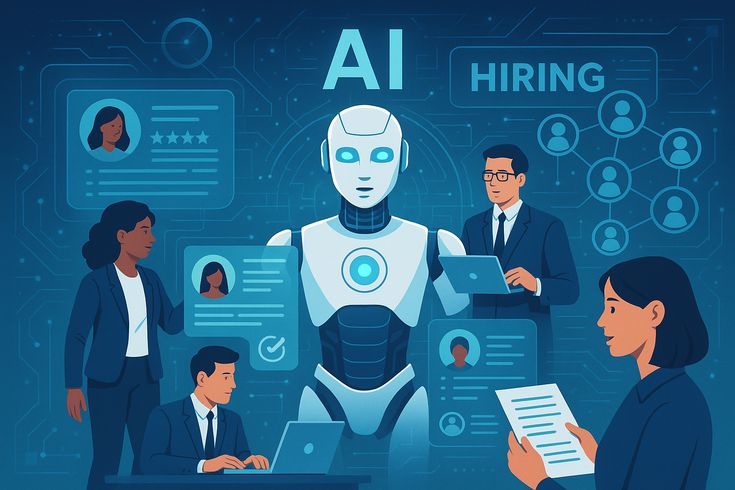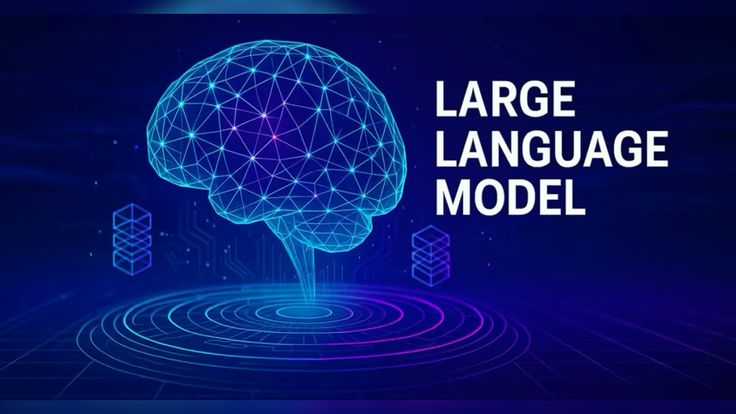1. Define Your Target AI Role

Success begins with clarity. Choose one or two specific AI roles—Machine Learning Engineer, Data Scientist, or MLOps Engineer—rather than trying to master everything at once. Research each position’s expectations, required skills, and typical workflows. Examine real job descriptions to identify recurring technical demands like Python programming, machine learning algorithms, data manipulation, and familiarity with cloud systems such as AWS or Azure. By narrowing focus, you can go deep instead of wide, developing practical expertise that matches employer needs.
Thank you for reading this post, don't forget to subscribe!A clear role definition also helps you plan what projects, certifications, and tools to prioritize. Document everything in a goal tracker—desired companies, key responsibilities, and skill milestones. This structured clarity saves time, prevents burnout, and ensures that every hour of study pushes you closer to a tangible career outcome. A focused learner becomes a specialized expert employers seek.
2. Research Core Skills and Technical Expectations
Once your target role is defined, conduct a deep dive into its technical core. Identify programming languages, frameworks, and mathematics you must master. Python is essential; beyond syntax, understand libraries like NumPy, Pandas, and Matplotlib. Learn machine learning foundations such as supervised/unsupervised learning, model evaluation, and data preprocessing. Explore databases (SQL, NoSQL) and get comfortable with cloud technologies for scalability. Review interview questions across platforms like LeetCode or Glassdoor to anticipate real scenarios. For every required skill, connect it with hands-on proof—a project or notebook showing its use.
Track how different industries use these skills: finance emphasizes time-series analysis, while healthcare prioritizes predictive modeling and data privacy. This mapping allows you to focus on practical relevance, not theoretical overload. When you clearly see what each skill accomplishes, your preparation becomes intentional and results-driven, aligning learning outcomes directly with job demands.
3. Understand Industry Demands and Trends
AI careers thrive in industries where data is abundant—healthcare, fintech, autonomous vehicles, e-commerce, and logistics. Research which domains currently hire aggressively for AI specialists. Analyze the kind of problems they solve: fraud detection, medical diagnostics, or personalized recommendations. Each industry values different strengths—healthcare emphasizes explainable AI, while fintech prizes robustness and regulatory compliance. Attend webinars or read case studies to understand industry pain points. Then tailor your learning to that context—if targeting healthcare, learn about HIPAA data regulations; for finance, focus on time-series forecasting. Following current AI trends (like generative AI or edge computing) ensures that your skills remain relevant.
This market awareness helps you position yourself as a domain-savvy candidate, not just a technical one. Employers value applicants who understand both technology and its business application. Industry focus transforms you from a coder into a solution architect.
4. Build a 3–6 Month Structured Learning Plan
After role and skill research, convert knowledge into an actionable roadmap. Break six months into phases—fundamentals, frameworks, and projects. Allocate weekly targets: coding hours, algorithm topics, or model implementations. Include core math (linear algebra, calculus, probability, and statistics), which fuels AI intuition. Schedule time for practical libraries like TensorFlow, PyTorch, and scikit-learn. Define milestones such as “complete an end-to-end classification model” or “deploy one project on cloud.” Keep metrics for progress—number of problems solved, mini-projects built, and hours spent coding. Review monthly and adjust goals based on what’s working.
A written roadmap gives direction and accountability, transforming random learning into consistent growth. Every milestone you meet adds confidence and portfolio evidence. By structuring your preparation, you’ll move from scattered tutorials to mastery, ensuring steady advancement toward your AI career objective.
5. Strengthen Mathematical Foundations

Mathematics powers every intelligent algorithm. Begin with Linear Algebra—understand vectors, matrices, and transformations; they form the language of neural networks. Next, Calculus builds insight into how optimization works—gradients and derivatives drive learning. Probability and Statistics train your intuition about uncertainty, sampling, and data distribution—crucial for evaluation and hypothesis testing. Don’t just memorize; visualize through tools like Desmos or Python notebooks. Reinforce theory with coding: manually implement linear regression, logistic regression, or a mini gradient descent function. These exercises bridge math and code, forming deep comprehension.
Math fluency lets you reason about hyperparameters, interpret loss curves, and debug training failures. It separates hobbyists from true AI professionals. Dedicate at least one day weekly to solving math-based machine learning problems—it will pay dividends across every framework you touch.
6. Develop Strong Python Programming Skills
Python is the backbone of all AI workflows. Learn to write clean, modular, and testable code. Understand syntax, OOP concepts, and memory efficiency. Master libraries: NumPy for numerical operations, Pandas for dataset manipulation, Matplotlib/Seaborn for visualization, and Scikit-learn for classical ML models. Practice refactoring messy notebooks into organized scripts or packages, following professional folder structures. Use Git for version control—commit often and document clearly. Manage environments with venv or conda for reproducibility.
Learn basic shell commands for file operations, dataset automation, and running training scripts. Python proficiency also includes understanding data pipelines, serialization (Pickle/Joblib), and model integration with APIs. Transitioning from experimentation to production-ready code demonstrates maturity—exactly what hiring teams want. Ultimately, fluency in Python transforms your creativity into deployable intelligence, allowing you to express AI concepts efficiently and confidently.
7. Gain Expertise in Key AI Frameworks
Practical AI demands mastery of popular frameworks that power real-world systems. Begin with Scikit-learn to handle classical ML workflows—data preprocessing, feature selection, model training, and evaluation. Progress to deep learning frameworks: TensorFlow and PyTorch. Understand their core abstractions—tensors, computation graphs, autograd systems, and optimizers. Practice building neural networks manually to demystify layer operations. Explore Keras for quick prototyping and Hugging Face Transformers for NLP tasks. Learn how to save and load models efficiently, fine-tune pretrained architectures, and utilize GPUs for faster training.
Complement this with MLflow for experiment tracking and hyperparameter tuning. Knowing frameworks is not just about syntax—it’s about understanding design principles that make code scalable. Demonstrating confidence across these tools signals you’re ready for complex production challenges. Employers expect engineers who can adapt frameworks intelligently to specific project contexts.
8. Practice Good Engineering Habits

AI developers are judged not only on algorithms but also on engineering discipline. Cultivate habits that make your work professional and reproducible. Always use Git for versioning, unit testing for reliability, and documentation for clarity. Build modular pipelines that separate data preprocessing, model training, and evaluation. Automate repetitive steps with shell scripts or Makefiles. Learn to use Docker for packaging environments, ensuring your models run identically across systems. Embrace continuous integration (CI/CD) principles—automate testing and deployment workflows.
Adopt code style guides like PEP-8 for consistency. Engineering excellence ensures your models don’t just work once but remain maintainable and scalable. In job interviews, candidates who discuss testing, modularity, and deployment pipelines stand out as professionals ready for production-grade challenges—not just experimental learners.
9. Build a High-Impact Data Science Portfolio
Your portfolio is proof of competence. Create 3–6 complete projects, each solving a distinct real-world problem. Begin with a clear problem statement and well-defined success metric. Acquire or scrape datasets responsibly and perform thorough cleaning—handle missing values, remove duplicates, normalize features. Proceed with feature engineering to extract meaningful patterns. Train and tune models, comparing them to baselines. Include visualizations that communicate findings effectively.
Document everything: a detailed README, pipeline diagram, performance summary, and lessons learned. Deploy at least one project as an API or web app using Flask or Streamlit. Diversity matters—combine NLP, vision, forecasting, and recommender projects. Prioritize quality over quantity: a few polished, production-ready demos outweigh a dozen half-finished notebooks. A great portfolio not only lands interviews but gives you stories to tell about challenges, impact, and growth.
10. Participate in AI Competitions
Platforms like Kaggle, DrivenData, or Zindi are laboratories for practical growth. Compete in real datasets under time constraints, improving your feature engineering, ensembling, and validation skills. Start with beginner challenges to learn workflow discipline, then move to advanced problems like object detection or NLP tasks. Study top solutions—reading others’ notebooks teaches you professional strategies. Treat each competition as a mini-project: document your process, track experiments, and reflect on results.
Even without a top ranking, the experience shows perseverance and ability to work with open-ended data. Mention competition achievements on your resume; employers see it as proof of practical readiness. Consistent participation sharpens intuition, builds reputation, and expands your network of like-minded professionals worldwide. Kaggle isn’t just a contest—it’s an ongoing mentorship ecosystem disguised as competition.
11. Learn About Large Language Models and Prompt Engineering

Large Language Models (LLMs) like GPT or Claude redefine AI workflows. Understand their capabilities—text generation, reasoning, and translation—and their limitations, such as context window restrictions and hallucinations. Study prompt engineering strategies: few-shot prompting (examples inside prompts), chain-of-thought prompting (explicit reasoning steps), and context shaping (strategically curating input). Experiment with APIs or open-source models to practice custom applications—summarizers, chatbots, or RAG (Retrieval-Augmented Generation) systems.
Learn to fine-tune models or use adapter layers for domain-specific optimization. Evaluate outputs using BLEU, ROUGE, or human review. Always integrate safety filters and ethical safeguards against bias. Employers value engineers who understand both technical and ethical dimensions of LLMs. Mastering this area demonstrates you’re ready for the next wave of AI jobs shaping human–machine collaboration.
12. Incorporate Ethical and Responsible AI Practices
AI’s power must be guided by ethics. Learn about bias, fairness, and data privacy principles. Recognize how dataset imbalance or labeling bias affects predictions. Study frameworks like Google’s AI Principles and EU’s AI Act guidelines. Implement checks: anonymize data, monitor model drift, and validate fairness across demographics. Document every ethical consideration transparently. When deploying, integrate explainability techniques like SHAP or LIME to make model reasoning interpretable. Ethical awareness doesn’t just protect users—it strengthens your professional credibility. Companies seek developers who build trustworthy systems. During interviews, being able to articulate how you ensured responsible AI deployment can distinguish you from purely technical candidates. Responsible AI isn’t optional—it’s the foundation of sustainable innovation.
13. Polish Your Resume, GitHub, and Online Presence

Your online presence markets your expertise before you speak. Keep GitHub professional—clean structure, clear READMEs, and reproducible results. Feature your top 2–3 projects pinned at the top. On your resume, quantify achievements: “Improved F1 score by 20%” or “deployed model serving 2k requests/day.” Use the STAR (Situation–Task–Action–Result) method for clarity. Optimize LinkedIn with a strong headline, skills section, and a concise “About” summary showcasing your AI focus. Link to your projects and technical blogs. Regularly post insights, code snippets, or competition reflections. A cohesive portfolio builds recruiter trust. Remember: consistent online branding conveys seriousness, technical strength, and communication skill—all essential for AI roles.
14. Apply Strategically and Use Referrals
Don’t apply blindly—target specific companies aligned with your domain interests. Customize resumes for every job, reflecting keywords from the description. Whenever possible, secure referrals through professional networks, alumni, or hackathon peers. Write concise, role-tailored cover letters referencing company challenges and how your skills solve them. Keep a spreadsheet to track applications, statuses, and contacts. Follow up politely after two weeks to reaffirm interest. This methodical approach raises visibility and reduces wasted effort. Strategic applications paired with referrals dramatically improve response rates compared to cold submissions. Treat job hunting as a data-driven experiment: refine your process using feedback until your interview rate rises consistently.
15. Master Interview Preparation

Prepare across three fronts: technical, conceptual, and behavioral. For technical, practice coding problems focusing on data structures, algorithms, and ML-specific implementations. Conceptually, revisit core ML principles—bias-variance, evaluation metrics, regularization, and system design. Behaviorally, rehearse clear storytelling about past projects, challenges, and lessons learned. Conduct mock interviews with peers or mentors, recording sessions for feedback. Develop concise yet confident ways to explain your reasoning under pressure. Learn to ask insightful questions—it shows curiosity and collaboration. The goal is clarity, not memorization. A strong candidate combines problem-solving ability with business awareness and communication fluency. Consistent practice ensures you stand out during real interviews as composed, technically sound, and adaptable.
16. Evaluate Offers and Commit to Continuous Learning
After securing offers, compare them holistically—salary, growth potential, mentorship quality, and work-life balance. Negotiate confidently using market data but stay respectful. Once onboard, plan your first 90 days: identify quick wins, understand internal workflows, and align with team goals. Most importantly, continue learning—subscribe to AI research summaries, take advanced courses, and experiment with new tools. The AI landscape evolves rapidly; stagnation is the only risk. Treat every project as an opportunity to refine both technical and leadership skills. Continuous curiosity ensures your long-term career remains future-proof and rewarding.



